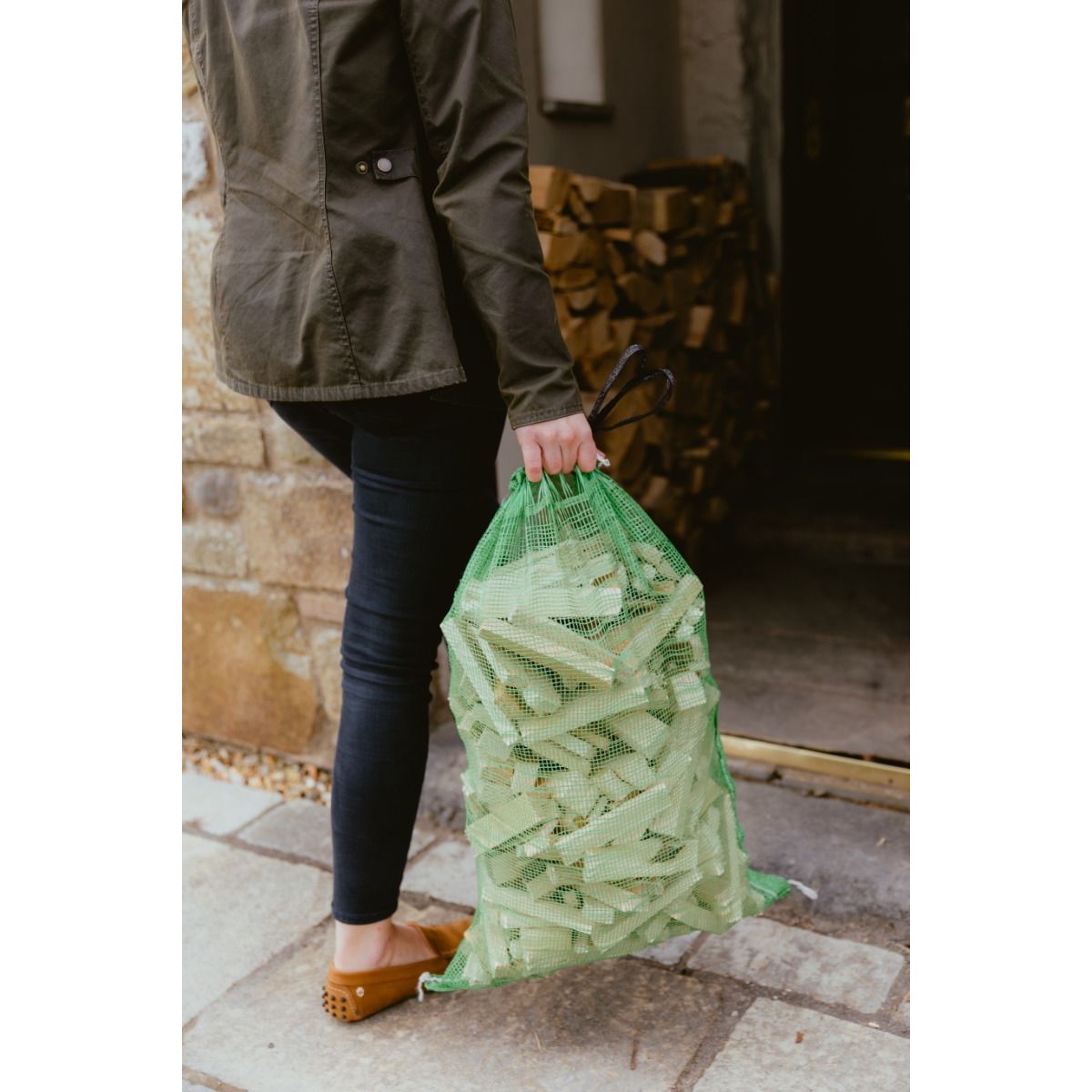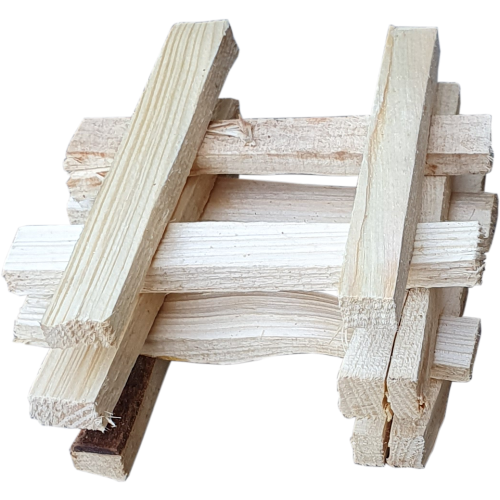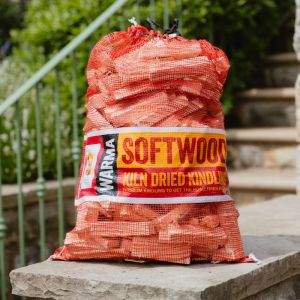Kindling - What is it and how to use it to light a fire.
What is Kindling and How to Use It to Light a Fire

Lighting a fire may seem straightforward, but without the right materials and technique, it can quickly become a frustrating task. Whether you're building a cosy indoor fire or preparing a campfire outdoors, kindling plays a vital role in getting the flames going efficiently and safely. In this guide, we'll explore what kindling is, why it’s important, the types of kindling wood you can use, and step-by-step instructions on how to use it to light a fire effectively.
What is Kindling?
Kindling refers to small, dry pieces of wood or other combustible material used to ignite a fire. It acts as a bridge between your initial fire starter (like newspaper or firelighters) and the larger logs or fuelwood that will sustain your fire over time.
Because of its size and dryness, kindling wood catches fire quickly and burns hot, generating enough heat to ignite larger pieces of wood. Without it, you may find it difficult to maintain a steady flame long enough to get your main fuel burning.

Why is Kindling Important?
Using kindling correctly makes fire-lighting more efficient, reliable, and safer. Here's why kindling is essential:
- Quick ignition: Kindling catches fire faster than logs or hardwood, giving you a steady flame early on.
- Steady heat source: It creates consistent heat that helps ignite larger wood pieces without smothering the fire.
- Efficient burning: With the right arrangement, kindling allows air to circulate freely, supporting combustion.
- Fuel transition: It acts as a step between lightweight fire starters and heavy fuelwood, creating a natural progression.
Best Types of Kindling Wood
Not all wood is equal when it comes to kindling. The best kindling wood is dry, lightweight, and easy to split. Some commonly used types in the UK are Softwoods like larch and spruce make excellent kindling due to their lower density and resin content, which makes them ignite quickly.
How to Use Kindling to Light a Fire
Lighting a fire with kindling is a simple process if you follow a few key steps. Whether you’re using an open fireplace, wood-burning stove, or firepit, the following method works reliably.
Step 1: Gather Your Materials, you'll need:
- Firelighters
- A generous handful of kindling wood
- A few small logs or larger kiln dried firewood
- Matches or a lighter
Step 2: Build the Base
Place your firelighters in the centre of your fire grate or stove. This will act as the initial flame source.
Step 3: Add Kindling
Stack kindling in a criss-cross pattern over the firelighter. This arrangement allows air to flow between the sticks, helping the fire catch and spread more effectively. Aim for 6–10 pieces of kindling, depending on size.
Step 4: Light the Fire
Carefully light the firelighter. The kindling should begin to ignite within a few seconds.
Step 5: Add Larger Logs
Once the kindling is burning well and creating a good bed of embers, begin to add your larger logs or fuelwood. Do this gradually so the fire doesn't become smothered or overwhelmed.
Step 6: Maintain Airflow
Ensure vents (on stoves) or chimneys (in fireplaces) are open to promote strong airflow and efficient burning. You can adjust these once the fire is fully established.
Tips for Success
Use kiln-dried kindling with moisture content below 20% for best results. Logs Direct sell a full range of kindling here.
Avoid using glossy magazines or painted wood, as these can produce harmful fumes.
If your fire struggles to catch, check that your chimney or flue isn’t blocked and that your stove has a good draw from the chimney. If not, it may be a good idea to have the chimney swept.
Where to Buy Kindling near you in the UK
You can purchase kindling from Logs Direct which has been produced and kiln dried in the UK.
Buying kindling in bulk or as part of a firewood bundle can also save money and ensure you're always prepared during winter.
Final Thoughts
Understanding what kindling is and how to use it properly can make the difference between a frustrating fire-starting experience and a cosy, crackling flame. By choosing the right kindling wood, preparing your fire thoughtfully, and maintaining good airflow, you can enjoy warm, efficient fires all year round.
Whether you’re new to lighting fires or looking to improve your technique, mastering the use of kindling is a fundamental skill every homeowner or outdoor enthusiast should have.
Frequently Asked Questions
What is the best kindling wood to use?
The best kindling wood is dry, lightweight, and easy to ignite. Softwoods like larch and spruce are excellent choices because they catch fire quickly and burn hot. Kiln-dried kindling is especially effective as it has a low moisture content, typically below 20%, making it reliable and easy to store.
Can I use any wood as kindling?
Not all wood is suitable for kindling. Avoid treated, painted, or damp wood. Stick to dry, untreated softwoods
that are dry and free from mould. Using poor quality wood can result in excessive smoke and difficulty starting your fire.
How much kindling do I need to start a fire?
Generally, a small bundle of 6 to 10 pieces of kindling wood is enough to start a fire. The exact amount depends on the size and dryness of the wood, as well as the type of fire you're building. It's better to start with more and reduce as you become more experienced.
Where should I store kindling?
Kindling should be stored in a dry, well-ventilated area, away from moisture and direct rain. A log store with a roof, a basket next to the fireplace, or a garage shelf works well. Keeping kindling dry is key to ensuring it lights quickly when needed.
Can I buy kindling online in the UK?
Yes, you can buy kindling wood online from Logs Direct who are firewood specialists and offer kiln-dried kindling in boxes, net bags and bulk. You can be assured that this kindling is of the highest quality as it is kiln dried and only the best quality wood is used.
Is kindling the same as firewood?
No, kindling and firewood serve different purposes. Kindling consists of small, thin sticks that ignite easily and help light larger logs. Firewood, on the other hand, refers to larger pieces of wood that burn slowly and provide long-lasting heat once the fire is established.


